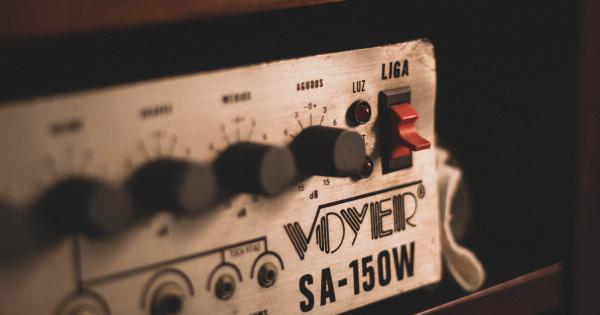In recent years, there has been a growing body of research exploring the relationship between music and pain management.
Music, being a universal language, has the ability to evoke emotional responses in individuals, which in turn can have a profound impact on our perception of pain. With the help of scientific studies and advancements in neuroimaging techniques, researchers are beginning to uncover the mechanisms behind this phenomenon and how it can be harnessed for effective pain management strategies.
This article delves into the science behind music’s therapeutic potential and its application in pain management.
The Role of Music in Pain Perception
Music has been a part of human culture for thousands of years, serving various purposes such as communication, expression, and entertainment. In recent years, it has gained attention as a potential tool for pain management.
But how does music actually influence our perception of pain?.
One theory suggests that music can modulate pain perception by engaging the brain’s reward system. When we listen to pleasurable music, our brain releases dopamine, a neurotransmitter associated with feelings of pleasure and reward.
This release of dopamine can reduce the intensity of pain signals reaching the brain, thereby providing pain relief.
Another proposed mechanism involves distraction. Music can divert our attention away from the pain stimulus, effectively reducing the brain’s processing of pain signals.
By shifting focus to the sounds, rhythms, and melodies in music, individuals may experience a decrease in perceived pain intensity.
The Neurological Effects of Music on Pain
Advancements in neuroimaging techniques, such as functional magnetic resonance imaging (fMRI) and electroencephalography (EEG), have allowed researchers to gain insights into the neurological effects of music on pain perception.
These studies have revealed the involvement of various brain regions and neural pathways.
One study conducted by researchers at the University of Utah used fMRI to examine the brain activity of individuals while they experienced experimental pain both with and without music.
The results showed that listening to music activated the brain’s reward centers, including the nucleus accumbens and the ventromedial prefrontal cortex. These areas are associated with the release of dopamine and the regulation of emotional responses, further supporting the theory that music can modulate pain perception through the brain’s reward system.
Similarly, EEG studies have shown that music can influence the degree of synchronization between different brain regions. This synchronization, or neural coherence, is believed to play a role in pain processing.
By modulating neural coherence, music may alter the brain’s perception of pain, providing relief or decreasing its intensity.
Music Genre and Pain Relief
Not all music is created equal when it comes to pain relief. Different genres, tempos, and musical elements can elicit varying emotional responses and physiological changes.
Researchers have found that certain types of music are more effective in reducing pain than others.
A study published in the Journal of Advanced Nursing examined the impact of different musical genres on pain perception during a cold pressor test, which involves immersing a hand in cold water.
The results showed that participants who listened to classical music experienced less pain and lower heart rates compared to those who listened to heavy metal or silence.
Other studies have highlighted the potential benefits of slow tempo music and nature sounds in pain management.
Slow tempo music, such as classical or ambient music, has been found to induce relaxation responses and decrease sympathetic nervous system activity, which can help alleviate pain. Nature sounds, such as waves crashing or birds singing, have also shown promise in reducing anxiety and enhancing overall well-being.
The Use of Music Therapy in Pain Management
Music therapy, a specialized field that integrates music and therapeutic techniques, has been increasingly recognized as a valuable adjunctive treatment for pain management.
Certified music therapists work with individuals to tailor music interventions based on their unique needs and goals.
One common music therapy technique used in pain management is known as “active music listening.” This involves engaging with music in a focused and intentional way, with the goal of promoting relaxation, distraction, and emotional regulation. Music therapists may also incorporate elements of guided imagery or mindfulness techniques to further enhance the therapeutic effects.
Another approach is the creation of personalized playlists.
By selecting music that holds personal significance and evokes positive emotions, individuals can associate the music with positive experiences and emotions, thereby reducing anxiety and pain perception.
Music therapy has been found to be particularly beneficial for individuals experiencing chronic pain, cancer-related pain, and postoperative pain.
It can be used in conjunction with traditional pain management strategies, such as medication and physical therapy, to enhance overall well-being and improve quality of life.
Practical Applications of Music in Pain Management
The use of music in pain management extends beyond music therapy sessions. It can be integrated into various healthcare settings and everyday life to promote comfort and alleviate pain. Some practical applications include:.
1. Preoperative and Postoperative Music
Listening to calming music before and after surgery has been found to reduce anxiety, decrease pain medication requirements, and enhance recovery.
Hospitals and surgical centers are increasingly incorporating music programs into their preoperative and postoperative care protocols to improve patient outcomes.
2. Music-Assisted Relaxation
Listening to relaxing music before bedtime or during moments of stress can help promote relaxation and improve sleep quality.
As pain often disrupts sleep, incorporating music-assisted relaxation techniques into bedtime routines may offer relief and improve overall well-being.
3. Music in Palliative Care
Music plays a crucial role in palliative care, providing comfort, emotional support, and pain relief for individuals nearing the end of life.
Music therapists collaborate with interdisciplinary healthcare teams to offer personalized music interventions that address physical, emotional, and spiritual needs.
4. Music Apps and Digital Platforms
With the rise of technology, numerous music apps and digital platforms have emerged, offering curated playlists and relaxation tracks specifically designed for pain management.
These resources provide individuals with convenient access to music interventions anytime and anywhere.
Conclusion
The science behind music and pain management is an emerging field that offers promising avenues for enhancing pain relief and overall well-being.
From the neurological effects of music on pain perception to the practical applications of music in healthcare settings, the potential benefits are vast. As further research continues to unravel the intricate relationship between music and pain, integrating music-based interventions into traditional pain management approaches may hold the key to more effective and holistic care.






























